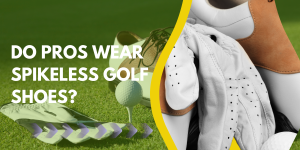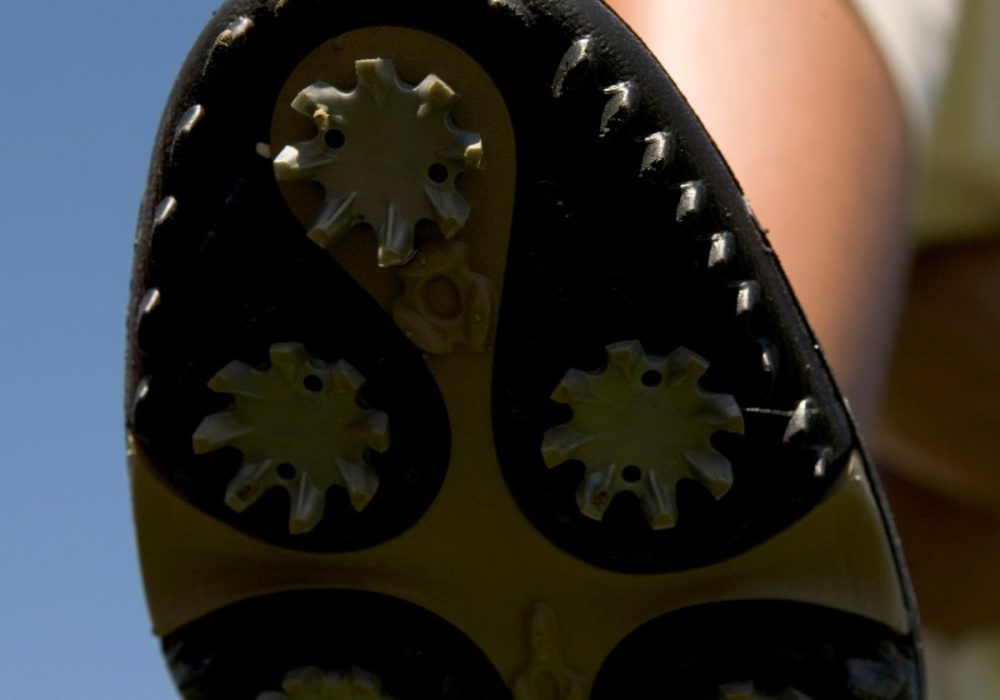Ah, the golf shoe—a crucial yet often overlooked component of any golfer’s arsenal. Ask any golf pro, and they’ll regale you with tales of how these unassuming pieces of footwear can make or break a round, significantly impacting not just comfort but also performance.
In the sophisticated world of golf, where the competition is fierce and even a slight slip can spell disaster, the right shoe is not a luxury; it’s a necessity.
You might be aware that golf shoes generally fall into two main categories:
- spiked
- and spikeless.
Spiked shoes, the descendants of yesteryear’s steel-spiked variants, have been long-standing favorites, lauded for their impeccable grip on the turf. But there’s been a revolution underfoot—quite literally.
Spikeless golf shoes, once considered the underdogs, have gradually gained ground, offering not just comfort but also remarkable traction.
With innovations like multidirectional lugs and cutting-edge rubber compounds, spikeless golf shoes have established themselves as viable contenders to their spiked counterparts.
But this raises an intriguing question: Do professional golfers actually wear spikeless golf shoes? And if they do, why?
The answer to this question isn’t merely a footnote (pun intended) in the evolving narrative of golf gear. It’s vital information that could impact your next golf shoe purchase and perhaps even elevate your game.
So, let’s embark on a comprehensive journey to answer this burning question. From the biomechanical science that governs golf swings to the nuanced preferences of tour pros like Rickie Fowler and Fred Couples, we’ll explore the world of spikeless shoes like never before.
Whether you’re an aspiring amateur or a seasoned player looking to update your footwear, you’re in for an enlightening read. Buckle up—or should we say, lace up?
- A Brief History of Golf Shoe Evolution
- The Advent of Spikeless Golf Shoes
- Why Do Golf Shoes Have Spikes?
- Pros Who Wear Spikeless Golf Shoes
- Why Some Pros Stick to Spikes
- Pros Who Wear Spikeless Golf Shoes
- CEO & Founder
- Marketing Officer
- Junior Farmers
- Senior Manager
- Spiked vs Spikeless Golf Shoes?
- Expert Opinions About Spiked vs Spikeless Golf Shoes
- Concluding Thoughts
A Brief History of Golf Shoe Evolution
Golf shoes have come a long way from their humble beginnings, evolving side-by-side with the sport itself and the professionals who’ve helped shape it.

The Leather Origins and Steel Spikes
Soft Spikes Enter the Scene
Then came the ’90s, a revolutionary period in more ways than one. As golf pros like Nick Faldo and Greg Norman were busy setting records, the soft spike made its debut. Lighter and less damaging to the greens, these became the immediate choice for pros.
Tiger Woods’ iconic “Tiger Slam” in 2000-2001 was achieved in soft spikes, a fact that’s not lost on keen observers of golf history.
The Advent of Spikeless Golf Shoes
Now, this is where things get interesting. In recent years, the spikeless golf shoe has moved from the periphery to center stage.
Spikeless golf shoes, distinguished by their flat soles adorned with small lugs or dimples, were initially met with skepticism. But pioneers like Fred Couples, who famously sported spikeless Ecco shoes during the 2010 Masters, proved that this seemingly radical design could hold its own on the world’s grandest golfing stages.
Phil Mickelson turned heads when he strolled onto the course sporting a pair of spikeless shoes, sparking discussions and, dare we say, influencing a new generation of golfers to think beyond spikes.
More recently, Rickie Fowler, known for his flamboyant sartorial choices, has also been spotted in designer spikeless options, putting a stamp of credibility on the spikeless revolution.
Today, as golf continues its evolution, with stars like Rory McIlroy and Dustin Johnson showcasing an athletic and dynamic form of the game, footwear has naturally followed suit.
Why Do Golf Shoes Have Spikes?
Golf shoes have spikes to provide better traction and stability on the golf course. The spikes help golfers maintain their balance while swinging the club, especially on various terrains such as wet grass or uneven ground.
The spikes dig into the ground, preventing the golfer’s feet from slipping during the swing and allowing them to generate more power and control.
Additionally, the spikes also distribute the golfer’s weight more evenly, which can help prevent fatigue and reduce the risk of injury. Overall, the spikes on golf shoes are a crucial feature that enhances a golfer’s performance by improving grip and stability throughout their round of golf.
We’ve come a long way since the days when Walter Hagen and Bobby Jones trudged the links in steel-spiked artillery, but the central function of spikes on golf shoes remains largely unchanged: to provide traction and stability, which are paramount for any golfer.
Anyone who’s ever swung a golf club can attest to the intricate ballet of biomechanics that goes into every stroke.
Whether you’re executing a power-packed drive or an intricate putt, the golf swing is a complex motion that demands precision, balance, and force—all of which are profoundly affected by the shoes you wear.
Consider the golf swing, a complex, multi-phase operation that ranges from the backswing to the downswing and finally, the follow-through.
At each of these stages, your feet play a pivotal role. They act as the foundation upon which the kinetic energy generated by your swing is built.
This isn’t mere opinion; it’s biomechanical fact.
When you set up your shot, it’s the foot-to-ground interaction that determines how efficiently you can transfer energy from your body to the clubhead.
A lack of grip can lead to a poor transfer of this energy, ultimately resulting in a loss of distance and accuracy. In simpler terms, poor footing equals poor shots.
For decades, spikes were considered the non-negotiable insurance against the foot slippage that could wreak havoc on your swing.
The metal spikes of old were particularly effective in digging into the ground, providing an almost unshakeable foundation.
But they had their drawbacks—namely, they were prone to tearing up the greens and fairways, something that didn’t sit well with course managers or the players who followed you. But, for a time, their benefits outweighed their drawbacks.
If you wanted to play like Jack Nicklaus or Arnold Palmer, you wore what they wore, and you accepted the trade-offs.
Modern Materials Providing Grip in Spikeless Golf Shoes
Enter the 21st century, where innovation has stormed the fairways and greens, challenging the status quo of spikes.
Spikeless golf shoes now come with an array of high-tech features designed to provide traction.
For instance, many modern designs use thermoplastic polyurethane (TPU), known for its durability and resistance to wear and tear, to create intricate tread patterns that offer substantial grip. Companies like Adidas and FootJoy have invested heavily in R&D to create spikeless shoes that offer grip levels comparable to, or in some cases even exceeding, traditional spiked golf shoes.
So, do spikes still matter?
In the traditional sense, perhaps not as much as they used to. However, the underlying need for traction and stability during a golf swing remains as critical as ever.
Spikeless golf shoes have closed the gap, thanks in part to advanced materials and sophisticated designs, making them a more attractive option for a broader range of golfers, including the pros.
Pros Who Wear Spikeless Golf Shoes
Fred Couples is often hailed as the poster child of spikeless golf shoes. Back at the 2010 Masters, Couples made headlines not just for his impeccable play, but for his choice of footwear. Donning a pair of spikeless Ecco golf shoes, he glided through Augusta’s pristine fairways, laying down the gauntlet and illustrating that spikeless shoes could withstand the pressure of a major tournament.
But Fred isn’t the only one. Many modern pros, known for their athletic, dynamic approach to the game, have also jumped on the spikeless bandwagon. Take Rickie Fowler, for instance, a player as known for his flamboyant style as for his prowess on the green. Over the years, Fowler has been spotted multiple times sporting spikeless golf shoes, advocating for their comfort and traction.
Rory McIlroy, another luminary of the golfing world, has also been spotted donning spikeless options during practice rounds. Though he’s been known to switch back and forth between spiked and spikeless depending on course conditions, the mere fact that a four-time Major winner would consider spikeless shoes is a significant nod to their performance capabilities.
Then there’s the young gun, Justin Thomas. A player whose game is characterized by sheer power and finesse, Thomas has occasionally opted for spikeless shoes during his rounds, particularly during relaxed Pro-Am events, pointing to their versatility and adaptability to various course conditions.
While the adoption of spikeless shoes started slowly on the professional circuit, the last decade has seen them appear in numerous major championships.
From the sun-drenched courses of the U.S. Open to the sometimes unpredictable weather conditions of The Open Championship in the UK, spikeless golf shoes have not just been present—they have thrived. And it’s not just about making a style statement.
When a player like Dustin Johnson, known for his meticulous attention to detail, chooses spikeless for certain conditions, it speaks volumes about the shoe’s merit.
The adoption of spikeless golf shoes among the pros isn’t merely a fleeting trend or a fashion statement. It’s a nod to the evolution of golf equipment and a testament to the fact that when it comes to performance, tradition can sometimes give way to innovation.
For these professionals, every shot counts, every choice is deliberate, and when they lace up a pair of spikeless shoes, it’s because they believe in their potential to aid their quest for golfing glory.
The Counterargument
Why Some Pros Stick to Spikes
As much as spikeless golf shoes have made a compelling entry into the professional golfing scene, it's crucial to acknowledge that many top-tier golfers remain loyal to the traditional spiked shoe.
But why? Is it just a matter of habit, or do these traditional spikes offer distinct advantages that the new-generation spikeless shoes can't match?
Let's delve into the reasons some of the world's best golfers still have these tiny protrusions at the bottom of their best golf shoes.
Pros Who Wear Spikeless Golf Shoes

Sammy R. Cross
CEO & Founder

Albert M. Golightly
Marketing Officer

Robert L. Manning
Junior Farmers

Corey E. Martinez
Senior Manager
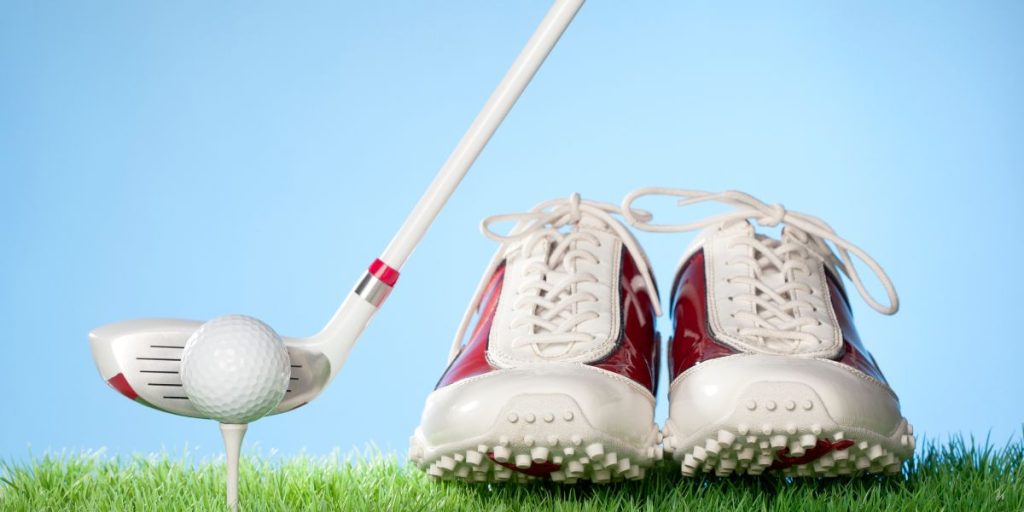

Spiked vs Spikeless Golf Shoes?
Now that we've navigated the technical labyrinth of spikes versus spikeless and delved into the choices made by the masters of the game, let's bring the focus back to you, the consumer.
After all, the primary goal of golf footwear is to improve your game. But before you rush to emulate Rory McIlroy's spikeless swagger or Tiger Woods' traditional spiked stance, let's examine the key considerations that should guide your decision-making process.
Your Skill Level
Here’s a reality check: not all golfers are created equal. Your handicap matters when choosing between spiked vs spikeless golf shoes. Novices may benefit more from the added stability spikes offer, especially as they’re mastering the fundamentals of the golf swing.
Intermediates to advanced players, who’ve already built a solid swing foundation, might find spikeless options more than sufficient for their needs.
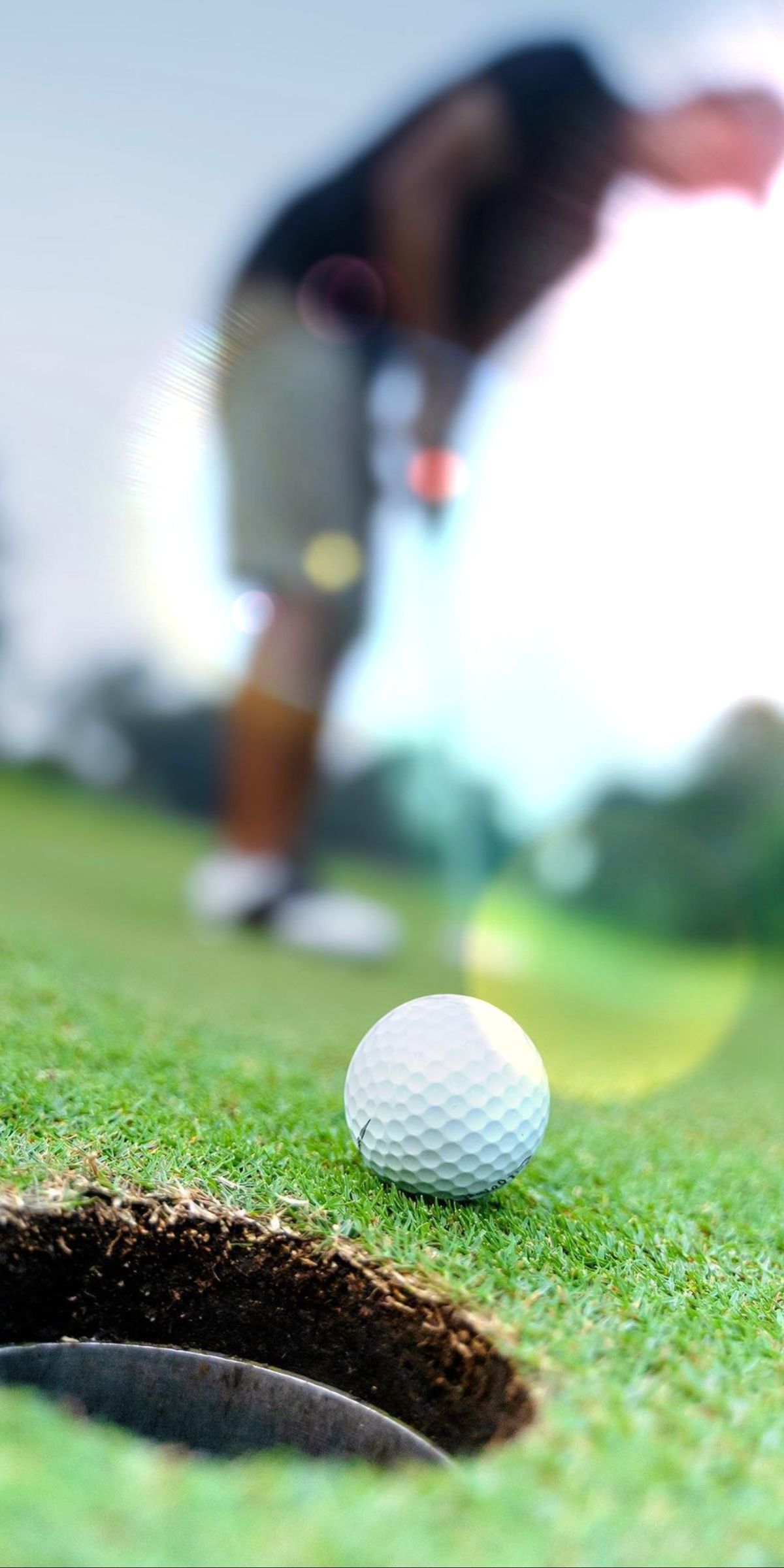


Playing Conditions
The terrains and conditions you most frequently play in can significantly influence your choice.
Wet and soggy courses might demand the grip and stability of traditional spikes, while drier, firmer grounds may not require such intensive traction, making spikeless shoes a viable option.
Before buying golf shoes, reflect on your most frequented courses: Are they often damp in the mornings? Are they hilly or flat? The answers will guide your choice.
Comfort and Versatility
It’s no secret that spikeless shoes offer greater comfort and versatility. Whether you’re heading straight from the 18th hole to the clubhouse or planning to stroll around the local mall after a practice round, spikeless shoes transition smoothly from course to everyday wear.
If comfort and off-course usability are priorities for you, spikeless might be your go-to. They are generally more flexible and less rigid than their spiked counterparts, providing an everyday wear kind of comfort.

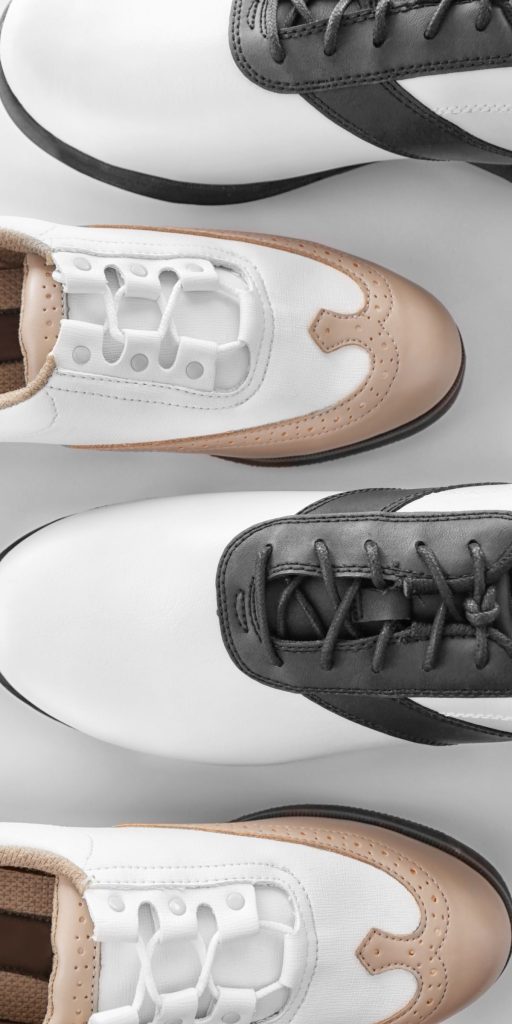
Aesthetics and Personal Preference
Last but certainly not least, let's talk style. Spikeless shoes often win in the aesthetics department, with sleek designs and a wider range of color options. If making a style statement on the course is crucial for you, spikeless designs offer more opportunities for personal expression.
Golf is as much a game of expression as it is of skill. Don't be afraid to let your personality shine through your choice of footwear.
Expert Opinions About Spiked vs Spikeless Golf Shoes
Let’s turn our attention to another segment of the golfing community that’s often overlooked but holds an immeasurable amount of wisdom: the experts.
Whether it’s course designers, caddies, or even the specialized media that covers every angle of the golf world, these folks eat, breathe, and sleep golf. And guess what? They have some indispensable insights into the great spike versus spikeless debate.
Professional Coaches Weigh In
Butch Harmon, a name synonymous with golf coaching excellence, has been on record discussing the importance of stability in the golf swing.
According to Harmon, while spikeless shoes offer remarkable comfort and can be great for a casual game, when the pressure mounts, especially on unpredictable terrains, spikes provide an unparalleled grip.
He believes that for players aiming for precision and stability, particularly in competitive scenarios, spikes remain irreplaceable.
On the other side of the coin, Sean Foley, who has coached the likes of Justin Rose and Tiger Woods, emphasizes adaptability.
Foley suggests that while spikes offer an undeniable grip, the evolution in spikeless technology shouldn’t be ignored. He argues that for many players, especially those with a fluid swing, spikeless shoes might offer just enough traction without compromising on comfort.

Golf Shoe Designers’ Perspectives
When it comes to shoe design, few are as revered as Tinker Hatfield, the genius behind many iconic sneaker designs.
Hatfield opines that while tradition has its place, innovation is the key to the future.
Spikeless designs, with their multi-directional treads and evolving technologies, represent the cutting edge of golf footwear.
For him, as courses and playing styles evolve, so should the shoes we wear on them.
In contrast, Scott Baxter, a lead designer for a major golf shoe brand, champions the continued relevance of spikes.
Baxter stresses that the ultimate goal of golf footwear is to augment performance. In situations where a millisecond’s slip can change the trajectory of a swing, the reliability of spikes, he argues, remains unmatched.
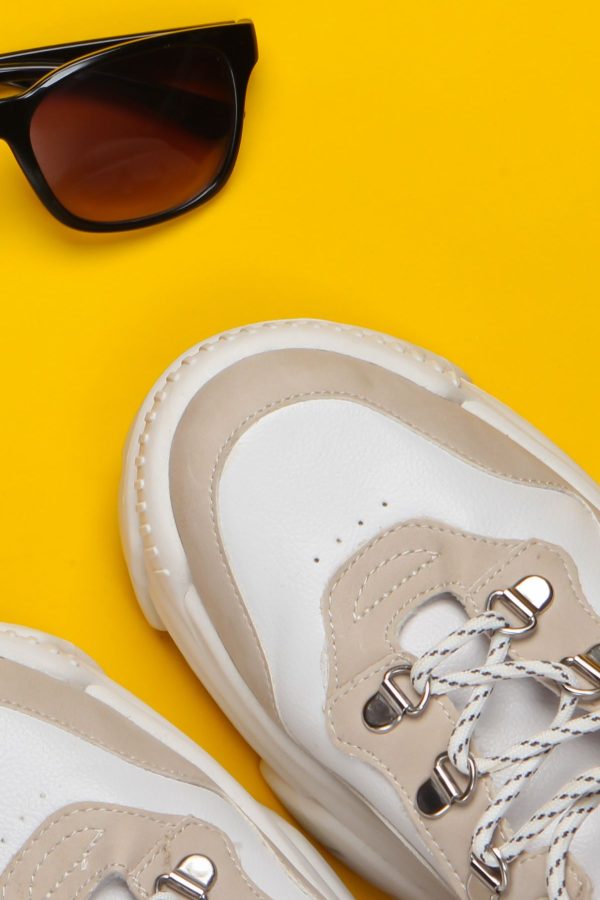
Course Designers and the Spike Debate
Course designers like Pete Dye or Tom Doak don’t merely craft landscapes; they sculpt challenges, and they have invaluable insights into how footwear can impact your game.
When these maestros talk about the importance of grip and stability in navigating the architectural intricacies they’ve painstakingly crafted, you better listen.
Interestingly, many course designers have endorsed the idea that modern spikeless shoes provide adequate grip for most terrains, underscoring that spikeless shoes are more than just a fad—they are a well-thought-out option for the modern golfer.
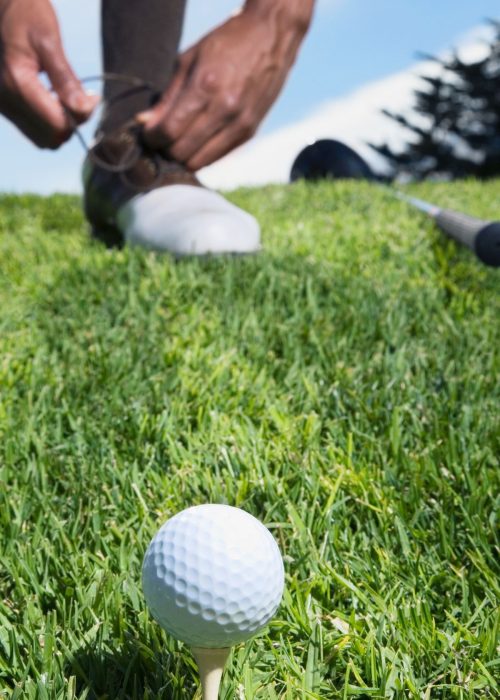
Golf Journalists and Analysts
When someone like Jaime Diaz or Brandel Chamblee weighs in on equipment, the golfing world listens.
Journalists and analysts, who often have access to proprietary data, have been surprisingly unanimous in their view that both spiked and spikeless shoes have their place in the game today.
Many analysts are quick to point out that the differences between the two are often smaller than advertised, suggesting that personal comfort and playing style should weigh more in your decision than professional endorsements or even technological features.
Concluding Thoughts
So, here we are, standing on the 18th hole of our spiked versus spikeless journey, and what a journey it’s been. From the pros to the Joes, from the course designers to the industry insiders, we’ve tackled the debate from every conceivable angle. But what have we learned? Let’s sum it up.
In the professional arena, there is no clear-cut winner between spiked and spikeless shoes. Legends like Tiger Woods may swear by the unflinching stability of spikes, especially in high-stakes situations. At the same time, modern titans like Rickie Fowler have displayed a penchant for spikeless shoes, taking advantage of the comfort and agility they offer. Each type of shoe has its unique advantages and limitations, and the choice often boils down to specific playing conditions, personal preferences, and the particular demands of each golfer’s unique playing style.
From a consumer perspective, the choice is just as nuanced. Consider your playing conditions, your style, your level of commitment to the sport, and even your aesthetic preferences. Whether you choose spiked or spikeless, know that modern technology has narrowed the performance gap between the two. Your decision, then, becomes less about chasing some illusory ‘best’ option and more about identifying what’s ‘best for you.’
Experts from various sectors of the golf world echo this sentiment, emphasizing that the shoe debate is far from binary. The current state of golf shoe technology offers viable options for every kind of player, underlining that the ‘right’ choice is as individual as your swing.
So what’s the final takeaway? In the grand tapestry of golf, your choice of footwear is a single, albeit crucial, thread. Both spiked and spikeless shoes have their merits. And while it’s tempting to look to the pros or experts for a definitive answer, the best choice is the one that makes you feel most comfortable, confident, and in control on the golf course.
